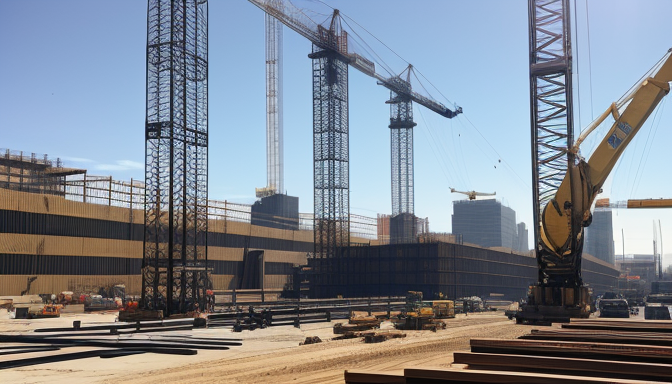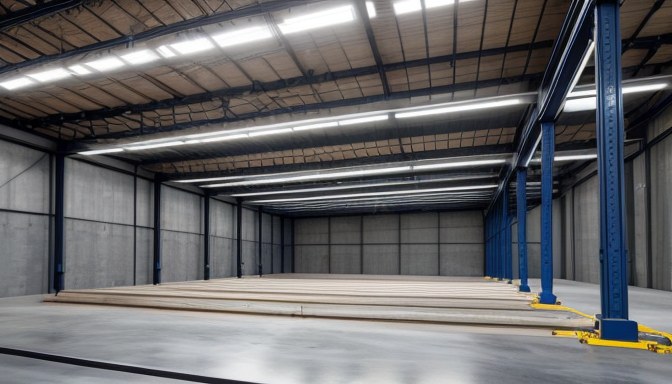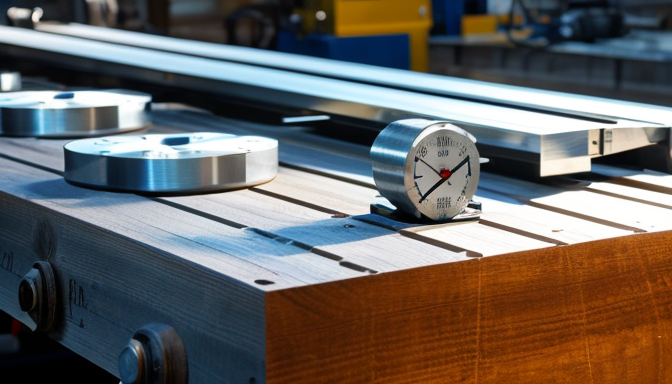This article explores the essential aspects of I Steel Profiles, including their price, weight, properties, sizes, and various uses in construction and engineering applications. Understanding these elements is crucial for anyone involved in building projects or structural design. I Steel Profiles are a popular choice due to their strength and versatility. But what exactly makes them so important in the construction world?
Imagine you’re building a house. You want it to stand tall and strong, right? That’s where I Steel Profiles come in. They act like the backbone of your structure, providing support and stability. But there’s more to it than just strength. The right profile can also save you money and time. Who wouldn’t want that?
In this article, we will take a closer look at several key aspects of I Steel Profiles. We’ll dive into their pricing, which can vary based on market trends. We’ll discuss their weight, which is crucial for both design and transportation. Plus, we’ll examine their unique properties that make them ideal for construction. We’ll also go over the standard sizes available in the market. Finally, we’ll explore the various uses of I Steel Profiles in different industries. So, buckle up! Let’s get started!
I Steel Profile Price
Understanding the pricing factors of I Steel Profiles is crucial for budget planning in construction projects. Prices can vary significantly based on a variety of elements. For instance, the type of steel, the profile’s size, and the current market demand all play a role in determining costs. Have you ever wondered why some steel profiles are pricier than others? Well, it’s all about the quality of materials and the manufacturing processes involved.
In recent years, the market has seen fluctuations in prices due to several factors. Economic conditions, trade tariffs, and the availability of raw materials can all impact the cost of I Steel Profiles. For example, when demand spikes—like during a construction boom—prices tend to rise. Conversely, during downturns, prices may drop. It’s a bit like a seesaw, constantly shifting with market conditions.
To give you a clearer picture, let’s look at some typical price ranges for various I Steel Profiles. Here’s a simplified table:
| Profile Size (mm) | Price per Ton (USD) |
|---|---|
| 100 x 50 | 600 – 700 |
| 150 x 75 | 650 – 750 |
| 200 x 100 | 700 – 800 |
As you can see, prices vary based on the size of the profile. But remember, these are just averages. Prices can differ based on location and supplier. Always do your research before making a purchase.
Additionally, it’s important to consider the long-term value of investing in quality I Steel Profiles. Cheaper options might save you money upfront, but they could lead to higher maintenance costs down the line. Think of it like buying a cheap pair of shoes. They might feel great at first, but if they wear out quickly, you’ll end up spending more in the long run.
In conclusion, understanding the price of I Steel Profiles is not just about numbers; it’s about making informed decisions for your projects. Keep an eye on market trends, and always weigh the cost against quality. After all, in construction, as in life, you often get what you pay for.

I Steel Profile Weight
The weight of I Steel Profiles is not just a number; it’s a crucial factor that influences many aspects of construction and design. Think about it: when you’re building something, whether it’s a bridge or a skyscraper, the weight of the materials can determine the overall stability and safety of the structure. Too heavy? You might face challenges during transportation and installation. Too light? You could compromise the strength and durability. So, how do we find that perfect balance?
Firstly, let’s dive into the basics. The weight of an I Steel Profile is typically measured in kilograms per meter (kg/m). This measurement gives builders a clear idea of how much material they are working with and helps in making informed decisions. For instance, if you’re using a heavier profile, you might need additional support structures to handle the load. On the other hand, lighter profiles might be easier to work with, but they require careful consideration regarding their strength.
Here’s a quick look at how the weight of I Steel Profiles varies based on their dimensions:
| Profile Size (mm) | Weight (kg/m) |
|---|---|
| 100 x 50 | 7.85 |
| 150 x 75 | 11.5 |
| 200 x 100 | 15.7 |
| 250 x 125 | 20.5 |
Now, let’s consider how this weight impacts your project. If you’re working on a large-scale construction, the cumulative weight of all the I Steel Profiles can add up quickly. This can lead to increased costs in transportation and handling. Additionally, the design of the structure must accommodate this weight. Engineers often have to calculate load distribution carefully to ensure safety.
Moreover, the weight can also affect the environmental impact of your project. Heavier materials often require more energy for transportation and installation. This is why many builders are now looking for ways to use lighter materials without compromising on quality. It’s a balancing act that requires a deep understanding of both the materials and the design requirements.
In conclusion, the weight of I Steel Profiles is a fundamental aspect that cannot be overlooked. It affects everything from design and safety to cost and environmental impact. So, the next time you’re involved in a construction project, remember: the weight of the materials you choose plays a pivotal role in your project’s success.
I Steel Profile Properties
I Steel Profiles are not just any ordinary steel shapes; they carry a set of unique properties that make them ideal for various applications. Think of them as the backbone of many construction projects. Their strength and reliability are unmatched. But what exactly makes them so special?
First off, let’s talk about strength. I Steel Profiles are designed to bear heavy loads. This means they can support the weight of buildings, bridges, and other structures without bending or breaking. Imagine trying to hold up a heavy book with a flimsy piece of paper. It just wouldn’t work! Similarly, I Steel Profiles provide the necessary support that keeps everything standing tall.
Next on the list is durability. These profiles are built to last. They can withstand harsh weather conditions, from scorching heat to freezing cold. You won’t have to worry about rusting or corrosion as much with these profiles, especially when they are treated properly. It’s like having a sturdy umbrella that protects you from rain and sun alike.
Another significant property is their versatility. I Steel Profiles can be used in various designs and configurations. Whether you’re constructing a skyscraper or a simple warehouse, these profiles can adapt to your needs. They come in different shapes and sizes, making them suitable for a wide range of projects. It’s like having a Swiss Army knife in your toolbox—ready for any task!
Here’s a quick overview of some key properties:
| Property | Description |
|---|---|
| Strength | High load-bearing capacity |
| Durability | Resistant to weather and corrosion |
| Versatility | Suitable for various applications and designs |
| Cost-effectiveness | Affordable for large-scale projects |
Lastly, we can’t forget about their cost-effectiveness. I Steel Profiles provide a great balance between quality and price. For builders and engineers, this means they can deliver high-quality structures without breaking the bank. It’s like finding a great deal on a sturdy pair of shoes that lasts for years.
In summary, the properties of I Steel Profiles—strength, durability, versatility, and cost-effectiveness—make them a go-to choice in construction and engineering. When you think of building safe and reliable structures, these profiles should definitely come to mind!

I Steel Profile Sizes
When it comes to I Steel Profiles, size matters. The dimensions of these profiles are not just numbers; they determine how well they fit into your project. Imagine trying to build a house with pieces that don’t fit together. Frustrating, right? That’s why understanding the various sizes available is crucial.
I Steel Profiles are typically categorized by their height and flange width. These dimensions can significantly affect the strength and stability of the structures they support. For instance, a taller profile can bear more weight, while a wider flange can provide better resistance against bending. Here’s a quick rundown of standard sizes you might encounter:
| Profile Height (mm) | Flange Width (mm) | Weight (kg/m) |
|---|---|---|
| 100 | 55 | 7.3 |
| 150 | 75 | 11.2 |
| 200 | 100 | 16.5 |
| 250 | 125 | 22.2 |
These are just a few examples. The market offers a wide variety of sizes to cater to different engineering needs. Depending on your project, you might need a specific profile size to achieve optimal performance. It’s like choosing the right tool for a job; using the wrong size can lead to inefficiencies and even failures.
Moreover, when selecting the size of an I Steel Profile, consider the load it will carry. A larger profile might seem like a good idea, but it can also add unnecessary weight to your structure. Balancing size and weight is key. Think of it as finding the sweet spot in a seesaw; too much weight on one side can tip the balance.
In conclusion, knowing about I Steel Profile sizes is essential for anyone involved in construction or engineering. It’s not just about picking a number; it’s about understanding how that number fits into the bigger picture of your project. So, next time you’re planning a build, take a moment to consider the sizes of the profiles you’ll use. It could make all the difference!
I Steel Profile Uses
I Steel Profiles are like the backbone of many structures. They are incredibly versatile and find their way into numerous applications. Have you ever walked past a building and wondered what keeps it standing tall? That’s where I Steel Profiles come into play. They provide strength and support, making them essential in construction and engineering.
One of the most common uses of I Steel Profiles is in the construction of buildings. They are often used in beams and columns, providing the necessary support to hold up the entire structure. Without these profiles, many skyscrapers and bridges would not be possible. They help distribute weight evenly, ensuring that everything remains stable and secure.
But that’s not all! I Steel Profiles are also used in manufacturing. In factories, they are found in the frames of machines and equipment. This is because they can withstand heavy loads and resist wear and tear over time. Think about it: machines need to be strong and reliable, just like the materials used to build them. I Steel Profiles fit that bill perfectly.
Another exciting application is in infrastructure projects. Roads, railways, and bridges often utilize I Steel Profiles to ensure safety and durability. Imagine driving over a bridge that doesn’t have a solid foundation. Scary, right? That’s why engineers choose I Steel Profiles. They are tested for strength and can handle the pressure of heavy traffic.
Let’s not forget about their role in scaffolding. When workers need to reach high places, I Steel Profiles provide the necessary support. They create a sturdy platform that allows for safe construction and maintenance work. Safety is paramount, and these profiles help ensure that workers can do their jobs without fear.
Here’s a quick overview of some key applications:
- Building construction (beams and columns)
- Manufacturing (machine frames)
- Infrastructure (bridges, roads, railways)
- Scaffolding (support structures)
In short, I Steel Profiles are a crucial component in various industries. Their strength, durability, and versatility make them a favorite among engineers and builders alike. Next time you see a tall building or a sturdy bridge, remember that I Steel Profiles are likely playing a vital role in keeping it all together!
Frequently Asked Questions
- What are I Steel Profiles?
I Steel Profiles are structural steel members shaped like the letter “I.” They are widely used in construction and engineering due to their strength and versatility. Think of them as the backbone of many buildings, providing support and stability.
- How is the price of I Steel Profiles determined?
The price of I Steel Profiles can vary based on several factors, including market demand, material costs, and manufacturing processes. It’s like shopping for a new car; the features and brand can significantly affect the price. Keeping an eye on market trends can help you budget effectively for your projects.
- What is the typical weight of I Steel Profiles?
The weight of I Steel Profiles depends on their size and thickness. Generally, heavier profiles are used for more demanding structural applications. Think of it this way: just as heavier materials can support more weight in a bridge, the right I Steel Profile can ensure your structure stands strong.
- What properties make I Steel Profiles suitable for construction?
I Steel Profiles are known for their high strength-to-weight ratio, durability, and resistance to environmental factors like corrosion and extreme temperatures. They’re like the superheroes of construction materials, ready to withstand the toughest conditions while remaining lightweight and easy to handle.
- What sizes do I Steel Profiles come in?
I Steel Profiles are available in a variety of standard sizes to meet different engineering needs. From small-scale projects to massive constructions, there’s an I Steel Profile size that fits just right. It’s similar to finding the perfect pair of shoes; you need the right fit for optimal performance!
- What are the common uses of I Steel Profiles?
I Steel Profiles are incredibly versatile and can be used in a range of applications, including beams, columns, and frames in buildings, bridges, and even machinery. They’re like the Swiss Army knife of construction materials—always ready for any task at hand!
